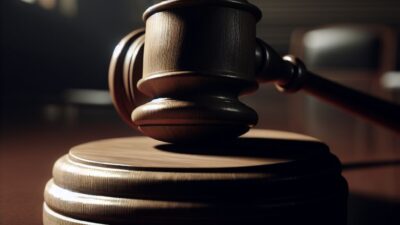President-elect Trump’s Focus on H-1B Visa Reform
As the nation gears up for another term under President Donald Trump, a major reform to the H-1B visa program is on the horizon, as experts believe the system needs urgent attention.
Understanding the H-1B Visa Program
The H-1B visa program was designed to allow American companies to employ foreign workers in specialty occupations when suitable American candidates are unavailable. However, critiques have surfaced, suggesting the program has deviated from its original purpose.
Lora Ries, the director of the Heritage Foundation’s Border Security and Immigration Center, expressed concerns in a recent interview, stating, “It is not being used as was intended by Congress, so it needs to be reformed.” This sentiment reflects a growing consensus among critics who argue that the program is being exploited.
Trump’s Return to the Oval Office
With Trump moving from candidate to president-elect for the second time, he has already begun announcing key Cabinet appointments and laying out a strategic agenda for his upcoming term. Among the various issues he is expected to address, immigration, particularly the H-1B visa program, remains a priority.
Throughout both of his previous campaigns, immigration has always been a focal point. Trump’s administration is anticipated to hone in on the current immigration policies that govern the entry of foreign workers into the United States.
The Need for Reform
Trump’s administration previously attempted to modify the H-1B visa program, addressing issues of fraud and misuse. Ries noted that the program has suffered from “fraud and abuse,” straying far from its initial objectives.
“Like so many programs, it has gone away from intent and been watered down and defrauded,” she remarked, emphasizing the importance of restoring the program to its intended purpose of benefiting American labor.
Previous Reforms and Their Impacts
In his first term, Trump implemented several reforms targeting the H-1B visa program to mitigate perceived abuses and protect American jobs. Among these was the introduction of strict definitions of “specialty occupations” and enforcing stringent minimum wage requirements for H-1B holders. This move was a part of his broader strategy to ensure American workers were not overlooked in favor of cheaper labor.
“The program needs more work protections for Americans,” Ries added, highlighting instances where skilled American workers were replaced by lower-wage foreign employees. There are numerous documented cases where American staff was required to train their foreign replacements, an issue that resonated deeply with many citizens during Trump’s first campaign.
Trump’s Position on American Workers
Throughout his political journey, Trump has consistently advocated for the protection of American jobs. On the campaign trail in 2016, he emphasized a commitment to “eliminating rampant, widespread H-1B abuse,” using the case of Disney in Florida as a stark example of the problems with the current system.
Ries concurs with Trump’s stance, stating, “Protecting American workers and not replacing them with foreign workers just because you can pay less money,” must be a central tenet of any forthcoming reforms of the H-1B visa program.
Looking Ahead: Future Reforms under Trump
As Trump prepares to take office once more, observers are keenly watching how he will approach the H-1B visa program. The expectation is that any reforms he proposes will closely mirror those from his first term, focusing on safeguarding American workers and eliminating fraudulent practices.
As the U.S. navigates its recovery from the economic challenges of recent years, the immigration policies, especially those pertaining to skilled labor, will play a significant role in shaping the economic landscape of the nation. The H-1B visa program’s future will not only affect businesses seeking specialized talent but will also have profound implications for American workers.












